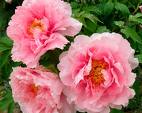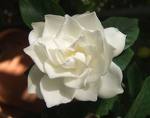Top 5 Choices for Wedding Flowers
I decide to write an article about the top choices for wedding flowers. I know that there are may people that are planning a wedding and may not know what kinds of flowers to choose. I have also included information about how these plants are grown. I have decide to write an article that helps these people figure out what kinds of flowers they like. I will describe the history of the top 5 choices and and some of the colors and different styles and some of the different growing conditions that each plant meeds. The top 5 choices would be Roses, Hydrangeas, Peonies, Gardenias, and Sweet Pea.
Types of Flowers:
Roses
History: The earliest roses where around about 35 million years ago. Rose petals were seen as a way to keep off drunkness, if people put them into there wine. Also victorious armies would be showered in rose petals. In 1867 a French breeder by the name Guillot introduced the first hybrid tea rose, and called it "La France". By the late 20th Century, there were more than 10,000 hybrid tea roses. Style/Color: Roses have a long colorful history. There are 30,000 varities of roses and they also have the most complicated family tree (or also known as flower species). Some flowers that mix well with rose trees, are the dwarf plants. The spring dwarfs are Snowdrops, Muscari or Grape Hyacinths. The winter dwarfs are Aconite, small Narcissus, Scilia, dainty blue and white Chionodoxa. All these dwarfs are all short enough to do well under the rose tree's branches |
Hydrangeas
History: The hydrangea is also called the "Western" mop-head. The original native species is the lace-cap hydrangeas. They are native to Japan. Hydrangeas were considered the prize specimen in Japan in the 1970s. Style/Color: Hydrangeas have 25 different species, they are easy to propagte. The different colors of hydrangeas depends on the different pH level of the soil. Soils with a low level of pH produce blue flowers. A neutral level in pH would produce white flowers and a high pH level will produce pink flowers. |
Peonies
History: Peonies were first used for there medicinal value. The people would use the roots, bark, seeds and flowers for medical use. In the seventeenth century artists in China, and Japan would incorporate the peonies into there art work. The first breeder of the peonie was a Chinese horticulturist and through their work it lead to the introduction of many different types of peonies. Japan later simplified the flower, and is also the largest producer of peonies. Europe in the late 1800's and early 1900's used the plants from China and Japan to create there own breeding program. The peonies that are grown here in the United States are for ornamental use rather then medical. Style/Color: There are four different kinds of blossom shapes. A single shape which consists of a single layer of petals around the center. A semi-double which consists of 2 or maybe 3 layers of petals around the center. A double is a crowd of petals around the center so that the center is hidden. These flowers do best in cooler climates. Grown best in full to part sun, and with a well drained but with miost, rich soil. |
Gardenias
History: The gardenia is equivalent to the meaning of love and romance. They originated in Eastern Asia, the western parts of China, Japan, Taiwan. The gardenia was believed to be named after a physician by the name of Alexander Garden. Style/Color: These plants are able to thrive in acidic soils, which is a low pH. These plants are temperature sensitive and do best if kept at a constant 65 degrees.These are not the easiest shrubs to grow, they are very finicky houseplants. They also require humidity to range from 50-60 percent. These kinds of things can result in the loss of leaves, cold drafts, improper watering, excessive fertilization and the loss of sun light during the day. |
Sweet Pea
History: Box cars of seeds were shipped in the 1930's, they were shipped from producers in California to east of the Rockies where there consumers were. "The Queen of Annuals" is what the English gardeners called the sweet pea. The first written record of the first spotting of sweet peas was in 1695, by a member of St. Francis, Francisco Cupani. Francisco Cupani reported that he saw the sweet pea in Sicily. There were only six colors availible in Europe, this was only until the mid 1800's. In 1901, Silas Cole, founded the natural mutation in the garden, where he was the head gardener. Style/Color: Sweet pea are the longest lasting cut flowers, they can also adapt to any style of garden. The flower forms consist of a single, double, or semi-double. The fragrance of a sweet pea can vary in strength depending on a number of factors like the rain, high temperatures, time of day and the age of the flower. The sweet pea has the widest color range. Colors can be found as solid colors, bicolors, streaked or flaked colors, there are also theme blends. |
|
Sources: Information about Peonies and Peony Flowers - http://www.plantingflowerbulbs.com/peonies-and-peony-flowers.htm History of Roses & Growing Tips - http://www.disabledworld.com/artman/publish/historyofroses.shtml Images - Google Images Hydrangeas in History - History of Roses - History of Peonies - Gardenia; Flower of love & Romance - http://aradece.tripod.com/gardenia_flower_of_love_and_roma.html History of Sweet Pea - |




